 A Mischief of Rats by Sarah Yarwood-Lovett
A Mischief of Rats by Sarah Yarwood-Lovett Format: ebook
Source: purchased from Amazon
Formats available: paperback, ebook, audiobook
Genres: cozy mystery, mystery
Series: Dr Nell Ward #3
Pages: 420
Published by Embla Books on February 28, 2023
Purchasing Info: Author's Website, Publisher's Website, Amazon, Barnes & Noble, Kobo, Better World Books
Goodreads
When a driver dies during a glamourous classic car event at her family's estate, Dr Nell Ward is in a race against time to uncover the truth and prevent the killer from making a speedy getaway...
Back in her natural habitat, Dr Nell Ward heads to a woodland pond to survey local newt populations. She's shocked to discover a car submerged in the water - with the driver dead behind the wheel.
Nell recognises the dead man as professional racing driver, and tabloid love rat, Jack Rafferty, whose performance on (and off) Finchmere's racetrack had earned him enemies.
Suspecting this isn't the tragic accident it appears DI James Clark calls upon Nell and her ecological skills to help find the murderer. But she soon finds that more lurks under the surface than she could ever have imagined. Despite the danger, Nell is determined to dredge up the truth from the murky depths of this case, before it's too late...
My Review:
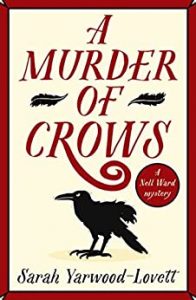 Whichever of her two personas is her alter ego, both of them are entirely too busy during the jam-packed weekend this story takes place.
Whichever of her two personas is her alter ego, both of them are entirely too busy during the jam-packed weekend this story takes place.
As Lady Eleanor Ward-Beaumont, daughter of the Earl of Finchmere and his wife, Imelda Beaumont MP, heir to the estate of Finchmere – the weekend of the Finchmere Classic – a Classic Car race, car auction, fun fair and general all purpose extravaganza may be one of Lady Eleanor’s favorite events at the estate but is also a showcase for her family’s stewardship of the land, maintenance of the estate, and everything she’s doing to keep the whole business self-sustaining and profitable for the ones who come after her.
That she is personally involved with one of the cars in the race, a formerly derelict but classic ‘gullwing’ Mercedes-Benz 300 SL that has been converted to an all-electric vehicle just adds to the heightened atmosphere – and the tensions among the car’s crew for the race add bucketloads of stress to a situation that is already fraught.
As Dr. Nell Ward, ecologist and environmental surveyor, she has committed to help a former intern at a nearby nature reserve do some surveying in preparation for an upcoming certification visit early on the morning that the festivities at Finchmere begin.
And both of her personas are on pins and needles as she hoped that she would be able to get to know her romantic partner’s parents as they attend the Classic – in between all the other demands on her time – which are legion even at the start.
When Nell and her friend Mai discover that the reserve’s pristine habitat has been compromised – if not outright ruined – by a car that crashed through and then sank in what had been a carefully rehabilitated pond – WITH a dead body in it – everything crashes along with the car.
Not that the dead man hadn’t honestly earned more than enough enmity for someone to have seen to his demise. But he was supposed to drive Nell’s car in the race. Her partner’s young sister left her custom-made earrings on the dashboard of the wreck. His parents, who already disapprove for multiple reasons – are about to blame Nell for the girl’s involvement – as well as everything else that continues to go wrong over one of the longest weekends in Nell’s life.
At least the police can’t arrest her for the murder this time around. Not that some of them wouldn’t still like to – if only to stop Nell meddling in the investigation. Again.
 Escape Rating B-: This third book in the Dr. Nell Ward series, after A Murder of Crows and A Cast of Falcons, follows a pattern that this series seems to have hit in my brain. I keep having mixed feelings about the whole thing – and this entry more than most for reasons I’ll get to, appropriately as you’ll see, at the end.
Escape Rating B-: This third book in the Dr. Nell Ward series, after A Murder of Crows and A Cast of Falcons, follows a pattern that this series seems to have hit in my brain. I keep having mixed feelings about the whole thing – and this entry more than most for reasons I’ll get to, appropriately as you’ll see, at the end.
I’ve been following the series because I like Nell as a character, but I like her nerdiness about her earned profession more than I do her persona as Lady Eleanor, so this book didn’t get as near to a mystery sweet spot for me as others that I follow. All of which means that I hope she gets back a bit more to her environmental work in the next book A Generation of Vipers. We’ll certainly see. Eventually.
But in the meantime, back to A Mischief of Rats. It could be claimed that the dead man was the chief rat in this mystery, but he actually wasn’t. The chief rat, that is. He certainly was one of the rats. That his rat-nature got him killed isn’t a surprise at all. That the road to figuring out how his rattiness rattled the chief rat to the point that it got him killed made for a marvelously twisty mystery, which I want to say had plenty of tasty red herrings but in this case no because rats and tasty do not belong in the same sentence or even the same paragraph.
Still, you get the point. Unlike the first book in the series, while I knew it wasn’t any of the obvious suspects fairly early on – I just didn’t figure out who the real killer was until the point where Nell does – with the police following along behind her. Literally.
The part that left me with extremely mixed feelings was the ending. Not the resolution of the mystery because that was fine and wrapped things up with a really cathartic and rat-free bow. But the personal parts of this story and the way they ended on a terrible crash of a cliffhanger gave me a lot of pause. And that’s literal, as in I will continue the series but I’m going to pause for a bit to let the ending settle.
While part of what I love about cozy mysteries revolves around getting to know the characters and the gang of friends and assistants that they gather around them, Nell seems to have a lot of personal angst and romantic drama that, for this reader at least, takes away from the fun and coziness of the mystery. There’s been a ‘torn between two lovers’ undercurrent going on through these first three books, and I’ve gotta admit that isn’t a place I want this series to go. (It’s part of what turned me off of the Stephanie Plum series – not that she changed her mind but that she couldn’t seem to make it up at all.)
 I admit that this is a ‘me’ thing that may not be a ‘you’ thing. Howsomever, for this reader it feels like Nell’s romantic trials and tribulations are a bit over the top, particularly as her rich and aristocratic background – along with her surprisingly functional relationship with her parents – seem to have insulated her from a whole lot of regular stresses and issues to the point where over-the-top is the only direction left.
I admit that this is a ‘me’ thing that may not be a ‘you’ thing. Howsomever, for this reader it feels like Nell’s romantic trials and tribulations are a bit over the top, particularly as her rich and aristocratic background – along with her surprisingly functional relationship with her parents – seem to have insulated her from a whole lot of regular stresses and issues to the point where over-the-top is the only direction left.
Which is exactly where this installment of the series ended – up and over the top of the wall and landing upside-down with traction. I’m still kind of reeling over it, to the point where I had to thumb the next couple of books to make sure that this story thread does get resolved no matter how much more angst will be involved in that wrapping.
So, for the most part, I was enjoying the mystery right up until that end, when I crashed right along with it. I’ll be back to see what murders Nell trips over and what terrible things happen in her personal life in A Generation of Vipers, but probably not for a couple of months at least.
We’ll certainly see the next time I get into another murder-y mood.

 Lovers at the Museum by
Lovers at the Museum by  The
The 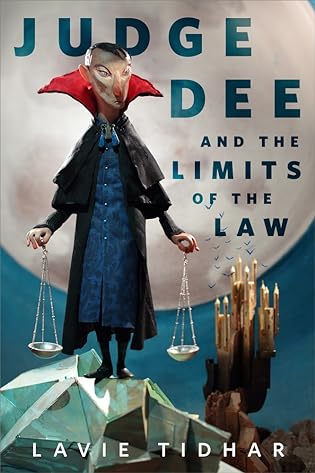 Judge Dee and the Limits of the Law (Judge Dee, #1) by
Judge Dee and the Limits of the Law (Judge Dee, #1) by  What makes the story fun – more than fun enough that I’ll be picking up the next story the next time I need something short to tide me over an overcommitted calendar – is the first person perspective of poor, put upon, Jonathan. He’s snarky, he’s both world-weary and vampire-weary, but he’s always aware of the side on which his bread is buttered – when he can get any, that is. So his commentary covers the Judge, the law he administers, his opinions and predilections, but also the companionship they provide each other.
What makes the story fun – more than fun enough that I’ll be picking up the next story the next time I need something short to tide me over an overcommitted calendar – is the first person perspective of poor, put upon, Jonathan. He’s snarky, he’s both world-weary and vampire-weary, but he’s always aware of the side on which his bread is buttered – when he can get any, that is. So his commentary covers the Judge, the law he administers, his opinions and predilections, but also the companionship they provide each other.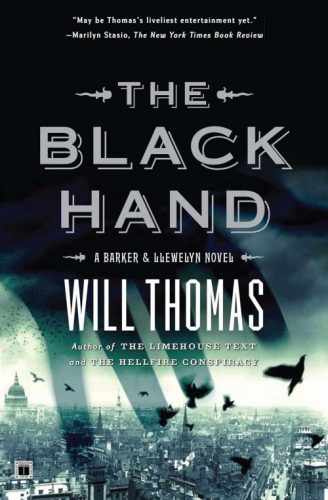 The Black Hand (Barker & Llewelyn, #5) by
The Black Hand (Barker & Llewelyn, #5) by 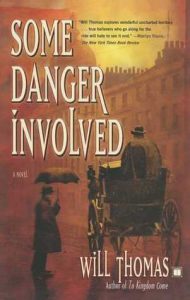 So far, at least, the
So far, at least, the 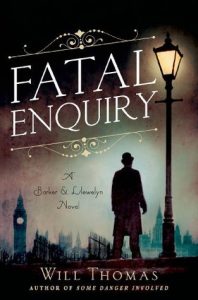 Last but not least there’s the resonance to the now in this story that is very much steeped in the ‘then’. Because while the case may be about the Mafia, what’s behind their advent into London is a debate about immigration and immigrants and just how easy or difficult it should be and just how much enforcement is necessary and which way and upon whom the economic impacts have and will fall.
Last but not least there’s the resonance to the now in this story that is very much steeped in the ‘then’. Because while the case may be about the Mafia, what’s behind their advent into London is a debate about immigration and immigrants and just how easy or difficult it should be and just how much enforcement is necessary and which way and upon whom the economic impacts have and will fall. Because I’ve enjoyed this series so much so far, it was an obvious choice for one of this week’s Blogo-Birthday giveaways – especially as the latest book in the series,
Because I’ve enjoyed this series so much so far, it was an obvious choice for one of this week’s Blogo-Birthday giveaways – especially as the latest book in the series, 
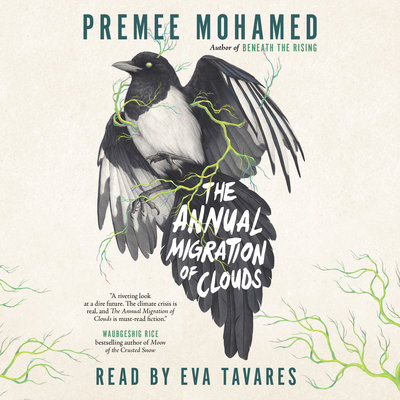 The Annual Migration of Clouds by
The Annual Migration of Clouds by  Escape Rating A-: I picked up this book because I read the sequel to this,
Escape Rating A-: I picked up this book because I read the sequel to this,  A Cast of Falcons by
A Cast of Falcons by 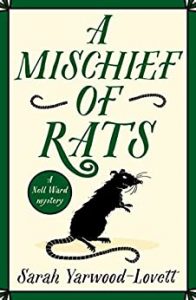 There are plenty of suspects for Hawke’s murder, as the man was a charming, conniving slimeball who left a trail of ruined companies and broken people in his wake – and clearly planned to do the same to Percy, her family, and her family’s properties.
There are plenty of suspects for Hawke’s murder, as the man was a charming, conniving slimeball who left a trail of ruined companies and broken people in his wake – and clearly planned to do the same to Percy, her family, and her family’s properties. Escape Rating B+: The latest book in this series,
Escape Rating B+: The latest book in this series, 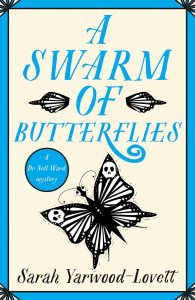 I found Nell to be a likable amateur investigator, and certainly felt for her inability to keep herself out of the investigation. After her previous experience, I wouldn’t have trusted the police either – which makes her decision to date the man who investigated her the first time around a bit questionable. While the ‘torn between two (potential) lovers’ dilemma that Nell is in the midst of isn’t my favorite, it was certainly an interesting twist on the theme to experience it more from one of those two lovers’ points of view instead of Nell’s. I’m hoping that she sticks to the choice she made in future books in the series, but we’ll see.
I found Nell to be a likable amateur investigator, and certainly felt for her inability to keep herself out of the investigation. After her previous experience, I wouldn’t have trusted the police either – which makes her decision to date the man who investigated her the first time around a bit questionable. While the ‘torn between two (potential) lovers’ dilemma that Nell is in the midst of isn’t my favorite, it was certainly an interesting twist on the theme to experience it more from one of those two lovers’ points of view instead of Nell’s. I’m hoping that she sticks to the choice she made in future books in the series, but we’ll see. The Citadel of Weeping Pearls (Xuya Universe) by
The Citadel of Weeping Pearls (Xuya Universe) by 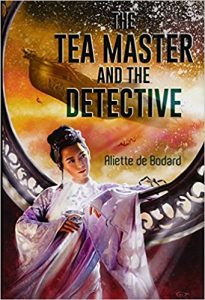 I’ve been nibbling at the vast, sprawling
I’ve been nibbling at the vast, sprawling  But nothing is quite as it seems, as the possibility of going back and bringing the Citadel forward forces everyone who has been touched by its disappearance to rethink what they did then, what they’ve felt in the absence of the shooting star that is/was Bright Princess Ngoc Minh, and what they might do with a second chance.
But nothing is quite as it seems, as the possibility of going back and bringing the Citadel forward forces everyone who has been touched by its disappearance to rethink what they did then, what they’ve felt in the absence of the shooting star that is/was Bright Princess Ngoc Minh, and what they might do with a second chance. Before the Coffee Gets Cold (Before the Coffee Gets Cold, #1) by
Before the Coffee Gets Cold (Before the Coffee Gets Cold, #1) by  Escape Rating A-: I picked this up – in fact I bought the whole series so far – because I’ve enjoyed several books recently that used this one as a pattern;
Escape Rating A-: I picked this up – in fact I bought the whole series so far – because I’ve enjoyed several books recently that used this one as a pattern;  What makes the collection as a whole work is that the remaining stories move the time travel further back and forwards in time, but step by step – or story by story – closer to the cafe’s proprietors and from that sweet possibility of a happy ending to something much closer to the bitterness of the coffee they serve. With just a hint of sugar to help the poignancy to go down.
What makes the collection as a whole work is that the remaining stories move the time travel further back and forwards in time, but step by step – or story by story – closer to the cafe’s proprietors and from that sweet possibility of a happy ending to something much closer to the bitterness of the coffee they serve. With just a hint of sugar to help the poignancy to go down.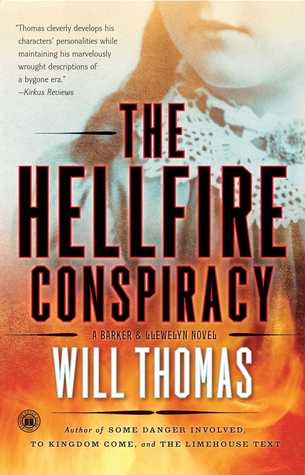 The Hellfire Conspiracy (Barker & Llewelyn, #4) by
The Hellfire Conspiracy (Barker & Llewelyn, #4) by 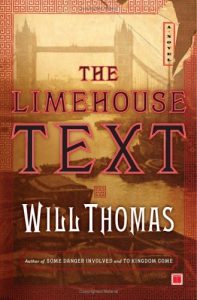 This fourth entry in the marvelously absorbing
This fourth entry in the marvelously absorbing 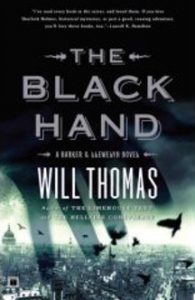 But it’s the characters of Cyrus Barker and Thomas Llewelyn themselves that keep the reader turning pages. Especially in a case like this one, where they go in knowing that the odds of a happy ending are very much against them, but determined to bring as much justice as can be had to all the victims of this atrocity; the living and the dead.
But it’s the characters of Cyrus Barker and Thomas Llewelyn themselves that keep the reader turning pages. Especially in a case like this one, where they go in knowing that the odds of a happy ending are very much against them, but determined to bring as much justice as can be had to all the victims of this atrocity; the living and the dead.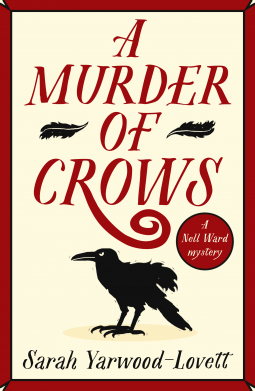 A Murder of Crows by
A Murder of Crows by